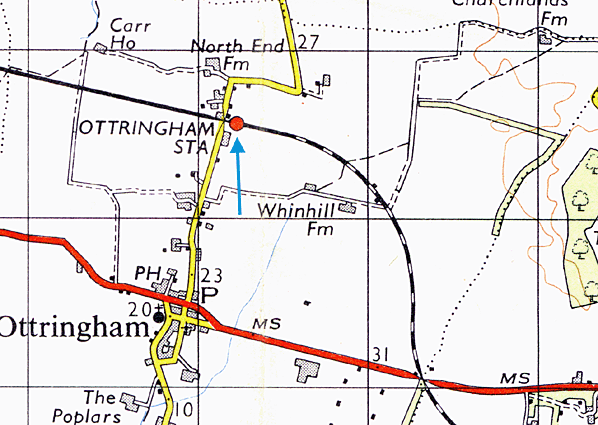|
BRIEF HISTORY OF THE HULL &
HOLDERNESS RAILWAY
The Hull and Holderness Railway was promoted by Hull merchant
Anthony Bannister with the objective of linking the industrial
port of Hull with the rich agricultural land of South Holderness;
parts of the South Holderness area had previously been accessible
via the river Humber at Hedon and Patrington Havens, but these
had begun to silt up. A secondary objective was to develop a
seaside resort on the coast in much the same way as the York
and North Midland Railway had begun to develop Scarborough and
Whitby. The coast between Tunstall and Easington was surveyed
and Withernsea chosen to be the terminus of the line and hence
the new resort.
Receiving Royal assent on 8.7.1853 the line was extremely easy
to construct as the South Holderness area is very flat and ballast
could be extracted close to the line at Kelsey Hill near Burstwick;
the line opened on 30.6.1854 with a Hull terminus at Victoria
Dock station. The railway was initially completely independent
and operated its own rolling stock, however it was too small
to survive independently and on 1.1.1860 the line was leased
to the NER which then bought the line outright on 7.7.1862.
Trains began running into Hull's Paragon station via the Victoria
Dock branch on 1.6.1864.
The line was constructed as a single track, but was doubled
in the early 20th Century. Single line sections remained between
Hedon and Ryehill and Burstwick stations and further east between
Ottringham and Winestead until closure. Diesel railcars were
introduced on 7.1.1957 and further cost cutting in the form
of Centralised Traffic Control (automated signaling and level
crossings) were proposed in the early 1960's only to be overtaken
by the 'Beeching Report' of 1962 which proposed closure of the
line.
The Hull-Withernsea line closed to passengers on 19.10.1964
(the same day as the neighbouring Hull-Hornsea branch) with
goods services lasting until 30.4.1965. Goods services to Hedon
continued until 1968.
Today several sections of trackbed are in use as a footpath/cycleway
with much of the formation intact. With the exception of the
Withernsea terminus, all the station buildings remain, mainly
in residential use.
Click here to see a film of a journey along the branch from Hull to Withernsea in 1957.
Route map drawn by Alan Young
Further reading 'The
Lost Railways of Holderness' by Peter Price (Hutton Press)
ISBN 0 0907033 86 5
To see the other
stations on the Hull - Withernsea line click on the station
name: Marfleet, Hedon
Racecourse, Hedon,
Ryehill
& Burstwick, Keyingham,
Winestead, Patrington,
Hollym Gate &
Withernsea
|





 Home Page
Home Page 



